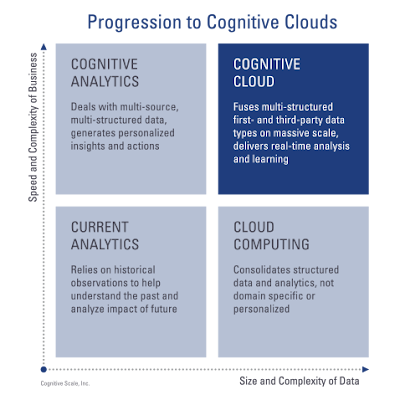Twitter Feed
My views on “Classification of Cloud Computing Stakeholders”
In “Cloudy Times”, Markus Klems is having a good discussion on how cloud computing stakeholders classify the various infrastructure options. I then thought that it would be good for me…
Personal Views on DISA, HP and RACE
DISA and HP are clearly on the path towards cloud computing. At it’s core, net-centric operations requires the effective delivery of information to forward forces and the translation of that…
DISA selects HP for RACE
Byte and Switch reported today that the Department of Defense (DoD) has confirmed that HP will help the Defense Information Systems Agency (DISA) deploy a major cloud computing infrastructure. Grid…
Speakers for First SOA-R Event Announced
Scheduled speakers and topics for the first SOA-R Cloud Computing Education event are: Steve Armentrout, Parabon, President & CEO Grid to Cloud Computing Greg Boss, IBM, Lead Cloud Solution Architect…
Cloud Computing Offerings – A Taxonomy
From “The various level of cloud computing” by Ross Cooney Applications in the cloud: Software as a Service (SaaS). Examples include gmail, yahoo mail, Hotmail, the various search engines, wikipedia,…
Cloud Computing Guides (updated 8/10/08)
InfoWorld Special Report on Cloud Computing InformationWeek Guide to Cloud Computing InfoWorld Cloud Computing Strategy Guide Cloud Computing Product Guide A Brief History of Cloud Computing Business Week CEO Guide…
Microsoft announcing Cloud Computing offering
According to Information Week, Microsoft plans to make three important business software offerings — Exchange, Office Communications, and SharePoint — available in SaaS versions for business this year, but it’s…
Intel new CIO to examine Cloud Computing
In a ComputerworldUK article, incoming Intel CIO Diane Bryant says that she will network with fellow information chiefs, examine cloud computing and advocate using the chip giant’s internal operations as…
Cloud Computing for National Security
As the national security community considers cloud computing as an IT infrastructure option, it is surely looking at the value of the cloud in an information sharing world. Implementation of…
According to the IBM Institute for Business Value the market will see a rapid adoption of initial cognitive systems. The most likely candidates have moved beyond descriptive and diagnostic, predictive and routine industry-specific capabilities. 70 percent of survey respondents are currently using advanced programmatic analytics in three or more departments. In fact, the widespread adoption of cognitive systems and artificial intelligence (AI) across various industries is expected to drive worldwide revenues from nearly US$8.0 billion in 2016 to more than US$47 billion in 2020.
The analyst firm IDC predictsthat the banking, retail, healthcare and discrete manufacturing industries will generate more than 50% of all worldwide cognitive/ AI revenues in 2016. Banking and retail will each deliver nearly US$1.5 billion, while healthcare and discrete manufacturing will deliver the greatest revenue growth over the 2016-2020 forecast period, with CAGRs of 69.3% and 61.4%, respectively. Education and process manufacturing will also experience significant growth over the forecast period.
th’s ability to replicate intuitive experiences provides a number of opportunities within sentiment analysis. With its ability to understand scenes and context, it can decipher how people are feeling based off facial expressions or voice stress levels.
- Need robust and simplified data classification processes in order to more easily deliver industry and business model specific value;
- Require the implementation of information technology security controls that are driven by data value and role based access control paradigms; and
- Leverage software applications that should be developed using ISO 27034 which is a multi-part standard on specifying, designing/selecting and implementing information security controls through a set of processes integrated throughout an organization’s Systems Development Life Cycle/s (SDLC).
( Thank you. If you enjoyed this article, get free updates by email or RSS – © Copyright Kevin L. Jackson 2016)
Cloud Computing
- CPUcoin Expands CPU/GPU Power Sharing with Cudo Ventures Enterprise Network Partnership
- CPUcoin Expands CPU/GPU Power Sharing with Cudo Ventures Enterprise Network Partnership
- Route1 Announces Q2 2019 Financial Results
- CPUcoin Expands CPU/GPU Power Sharing with Cudo Ventures Enterprise Network Partnership
- ChannelAdvisor to Present at the D.A. Davidson 18th Annual Technology Conference
Cybersecurity
- Route1 Announces Q2 2019 Financial Results
- FIRST US BANCSHARES, INC. DECLARES CASH DIVIDEND
- Business Continuity Management Planning Solution Market is Expected to Grow ~ US$ 1.6 Bn by the end of 2029 - PMR
- Atos delivers Quantum-Learning-as-a-Service to Xofia to enable artificial intelligence solutions
- New Ares IoT Botnet discovered on Android OS based Set-Top Boxes



